IRF
IRF Uppsala
RPF programme
IRF-U Staff
Seminars
Courses
PhD studies
Examensarbete
Workshops
Cluster
...EFW
...Quicklook
Cassini
Rosetta
Solar Orbiter
Intranet
| INSTITUTET FÖR RYMDFYSIK | UPPSALA |
 |
|
| Swedish Institute of Space Physics | (59°50.272′N, 17°38.786′E) |

Project work suggestion / Examensarbeten (30 hp)
Generation of artificial data series for ESA Solar Orbiter mission
Student: you?
Supervisor:
Goal
Generate artificial time series of expected electric and magnetic field observations by Solar Orbiter for different distances of the satellite from the Sun, particularly focusing on interplanetary shocks and test/develop triggering algorithms identifying shocks.
Background
Solar Orbiter is an ESA mission to fly close to the Sun and carry out both in situ and remote observations of the Sun. The Solar Orbiter will be launched 2017/2018 and will be operating at least until 2027. Important science topics addressed by the Solar Orbiter will be the physics of interplanetary shock formation in the solar wind, solar wind turbulence, coronal mass ejections and others. To address those questions there are different instruments on-board. IRF, Uppsala is contributing to one of the Solar Orbiter instruments (RPW) measuring electric field in the solar wind.
Project
To design Solar Orbiter instruments and operate them in an optimal regime it is crucial, at least in the early phase of the mission, to model expected experimental data sets. For in situ plasma studies it is crucial to model the expected electromagnetic fields and charged particle distributions. The project would focus on generating artificial model observations of electric and magnetic field observations by Solar Orbiter for different distances of the satellite from the Sun. Particular focus is on generating expected time series for interplanetary shock crossings. This is achieved based on the existing observations of satellites (such as Clsuter, Wind, Helios) and appropriately scaling those to the Solar Orbiter distances. On the obtained time series should be tested triggering algorithms that are planned to be used for identifying interplanetary shocks onboard. If possible, suggestions for improvement of those algorithms should be made. When sucessfull, the methodology is extended to generate artificial time series for the distances of NASA Solar Probe Plus spacecraft that is planned to be launched almost simultaneously with Solar Orbiter but which will approach the Sun to even closer distances.
Plan
| Week | Task |
|---|---|
| 1 | Basic understanding of solar wind, scaling of solar wind parameters |
| 2 | Basic understanding of Solar Orbiter and RPW instrument |
| 3 | Basic understanding of Wind, Cluster, Helios spacecraft |
| 4-6 | Access, selection of Wind, Cluster, Helios, Stereo data, test cases of interplanetary shocks |
| 7-9 | Generation of example time series from selected spacecraft for at least 10 interplanetary shocks |
| 10-11 | Modelling of scaling of time series within the solar wind |
| 12 | Start report writing |
| 13-15 | Testing of triggering algorithms and possible their improvements, report writing. |
| 16-17 | Critical evaluation of results, necessary reanalysis, report writing. |
| 18 | Report finalization |
| 19 | Reserve |
| 20 | Report presentation |
Links
Interplanetary shocks create killer electrons
Solar Orbiter
STEREO
Wind